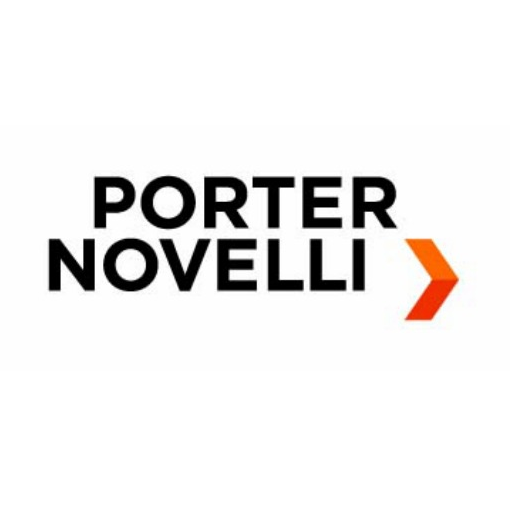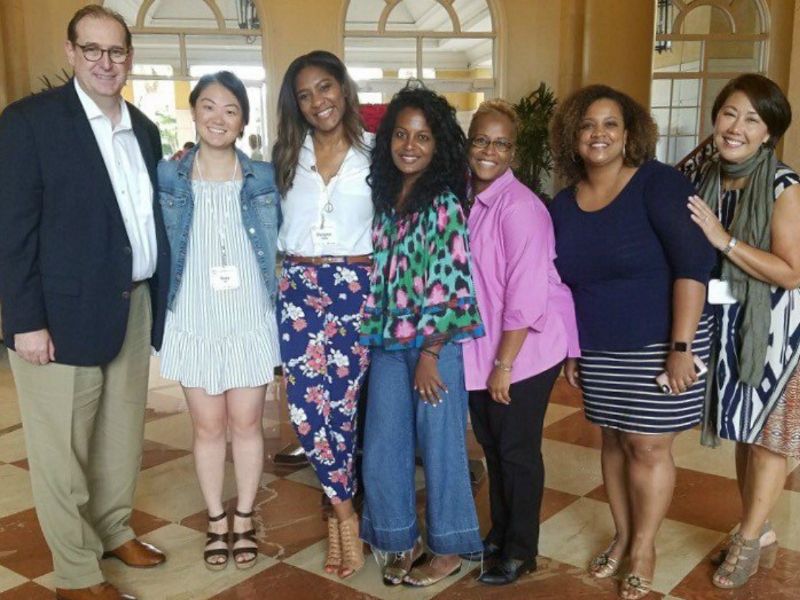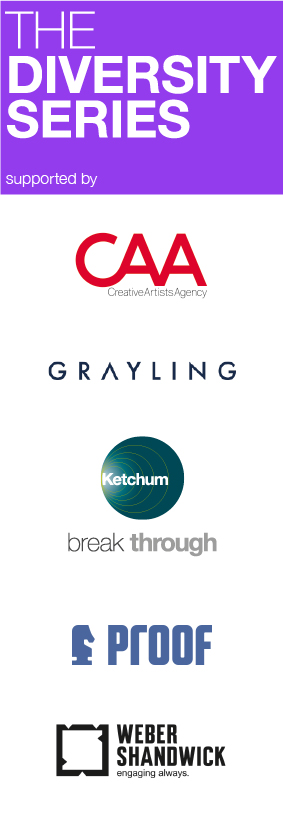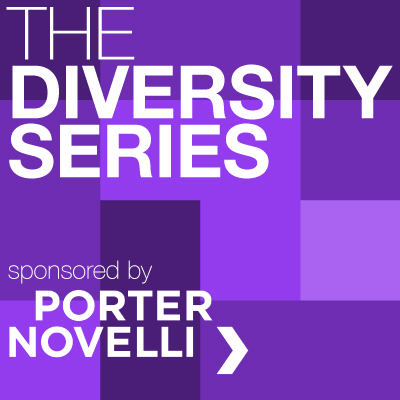Arun Sudhaman 02 Oct 2017 // 10:56PM GMT

‘Mind the gap’. That message, popularised by safety-conscious London Underground announcers, has become something of a mantra for progressive public relations people over the years. They use it to encapsulate the distance between rhetoric and action, typically for companies that fail to live up to the ideals they have fervently espoused.
BP, for example, did not mind the gap. A company that suggested it was ‘beyond petroleum’ was always likely to be severely castigated for the biggest marine oil spill in history. And so, the phrase strikes at the very heart of public relations, where corporate platitudes become worthless if they are not supported by concrete behaviour.
Something of this nature struck me when reading Angela Chitkara’s compelling research study for City College of New York's Branding and Integrated Communications Program, featuring interviews with 16 CEOs and two former CEOs of major PR firms, including such names as Richard Edelman, Andy Polansky, John Saunders and Rob Flaherty.
Because, if we’re being honest, the CEOs interviewed in the report all say exactly the right things about one of the critical challenges facing the industry — viz, the glacial rate of progress that PR firms have made when it comes to diversity and inclusion (D&I). And yet, there are many in the industry who question whether agency action on this topic actually backs up all of the rhetoric. Is the PR industry ‘minding the gap’ on D&I?
This is not to suggest that the people interviewed are not being sincere. By this point, I think the PR industry and its leaders are clearly aware of the work they must do to create agencies that better reflect the diversity of the societies in which they operate. Many CEOs are taking steps, slowly perhaps, to spearhead the kind change that will transform their agencies — even if their responses sometimes make for uncomfortable reading for anyone expecting a faster rate of progress. Neither can we pretend that progress will be easy, in an industry that is already grappling with a range of threats to its operating model.
Yet, a series of conversations with executives from diverse backgrounds suggests that the PR world continues to fall short of the standards required of a culturally heterogenous 21st century industry. PR firms, in particular, are still dominated — especially at the upper levels — by a homogenous demographic set.
"D&I is still a challenge for PR agencies because it requires addressing sensitive and uncomfortable issues, such as race, discrimination, and unconscious bias,” says MWWPR's Amber Micala Arnold.
"If something was geared towards your favor, would you want to let that go? If a whole system or structure was built with you in mind, would you want to dismantle it, even if it is the right thing to do?” adds another PR executive of color, speaking on condition of anonymity. "Not likely. Privilege is, and will continue to be, the greatest barrier to diversity and inclusion."
Arnold’s comments were echoed by many I spoke to in the wake of the CCNY Report’s publication. "Whether conscious or unconscious, the issue starts with biases,” says Simeon Coker, who has spent the past 18 months working as a senior copywriter at Edelman. "Biases affect hiring, firing, promotions, and development. Many agencies start diversity initiatives without truly acknowledging why they need them.”
"Diversity and inclusion starts with self-awareness,” adds Arnold. "Before a company can begin to see true progress at scale, the people who make up the company must believe the culture is worth changing."
Donna Renella, president of recruitment consultancy ABW Solutions and former VP of talent at IPG, was even more critical — describing the study as ‘fake news’. "All these things that we do don’t make a difference because the soul of the industry is not behind the efforts,” she claims. "This is the 21st century. We’re coming up with decisions that change the world, and we can’t change our own companies —who are we kidding?”
Unsurprisingly, perhaps, inclusion attracts the most ire of the critics. "Many D&I initiatives fail because they focus on diversity at a corporate level, rather than addressing inclusion at an individual level," says Arnold. "Individuals need to think about where they get their perspectives and beliefs, and how they can increase their exposure to difference. While training and diversity hiring practices are important and necessary to improve diversity efforts, PR agencies are going to need more than e-learning modules or reports that say they have increased their number of minority employees."
Indeed, many of the CEOs in the study focus their comments on efforts to hire more diverse staff. That is hardly surprising, but as Chitkara notes, it is no guarantee of a more inclusive workplace. It may well be the study's critical finding — until PR firms become more culturally heterogeneous, they will struggle to hold on to people who feel that they simply do not fit into the prevailing workplace environment.
Trisch Smith, the Edelman EVP in charge of the firm’s D&I efforts, admits that she “wholeheartedly agrees” that agencies have historically focused more on diversity as opposed to inclusion. "Largely because it’s easier to see a change in numbers, but it’s harder to assess it and to feel it,” she explains. "Diversity is inviting someone to the party and inclusion is asking them to dance and learning their dance moves. Often times we’re inviting them but we haven’t spent enough time on the environment we’re creating and culture we’re fostering."
Smith believes this is where PR firms have fallen short, resulting in the kind of “revolving door” that often plagues efforts to build a minority talent base. "If an individual is in an environment in which they don’t feel that they belong, they are not likely to stay. The culture shift is much more difficult to accomplish, but also to gauge, because you’re not talking about sheer numbers.”
"A diverse workforce without an inclusive culture is a recipe for high turnover,” adds Sharon Jones, who oversees D&I as an SVP at Ketchum.
Interestingly, many of the minority executives that I spoke to believe the situation can be improved by firms embracing a measure of honesty and responding appropriately despite whatever discomfort that might occasion.
“The first step that needs to be taken is utilizing raw insights from the employees if color they already have,” says Coker. "And be ready to hear things that are not pleasant. This issue needs to be approached the same way we approach our clients business problems.”
Both Arnold and Smith, meanwhile, point to large- and small-scale forums that focus on dialogue and discussion. “While trainings and diversity hiring practices are important and necessary to improve diversity efforts, PR agencies are going to need more than e-learning modules or reports that says they have increased their number of minority employees,” says Arnold. "There needs to be regularly scheduled townhall-style meetings where minority employees can engage in open dialogue and can express their opinions free of judgment.”
"Companies should ask themselves: Is having an inclusive culture still taboo to discuss openly and often? Have employee engagement responses indicated the environment is ‘ liquish'? If the answer to these questions is yes, then chances are the organization’s culture is not as inclusive as could be."
Related Sponsored Content: W2O's podcast with Kim Hunter on making diversity a business imperative.
Smith notes that Edelman held a 600-plus employee virtual town hall following last summer’s police-related shootings. "It was difficult for colleagues to come to work and focus on client work in light of all that was happening. The call allowed people to really be candid about who they are and what they were feeling."
"Whether we call them affinity groups, employee networks or diversity councils…what’s missing is the focus on creating environments in which people can show up and be their true authentic selves,” adds Smith, noting that assimilation towards a preset cultural norm remains a risk. “We all come to work and we do our work, but we don’t really get to know each other. We were probably late to the game as an industry in terms of a comprehensive ongoing D&I or cultural awareness training that can help us understand and unpack those issues.”
Jones, meanwhile, believes that training (of the type Ketchum has rolled out) is required to "identify and mitigate unconscious bias in our everyday decision-making."
Kyle Arteaga, who co-founded boutique PR consultancy Bulleit in 2012 after working in a succession of in-house roles, thinks this type of approach should probably be extended to the very mindset that MNCs bring to their business models.
"Far too often, companies seem to think they can take their leadership models and people and put them into new markets (whether its an emerging region or a new demographic) and force things into submission,” he explains. "And while this may work to some limited extent, a full understanding of the culture and ethos of these new groups is what will lead to long term business success. This is even more important when you consider that our industry is built on clearly articulating values and trust.”
"So it begs two questions, what type of business do you want to service?,” asks Arteaga. "And who are the people that you want to be servicing? If those audiences are in themselves diverse then you and your company, leadership and values need to implicitly share their understanding."
In the CCNY Report, many CEOs admit that the focus on diversity metrics clouds the underlying problem that agencies continue to face when it comes to building more inclusive work environments.
"People often focus on the need to build diverse teams and how integral that is to the fabric of an organization," says Weber Shandwick CEO Andy Polansky in the study. "But people don’t spend enough time thinking about inclusion. Even when companies are successful in bringing great diverse talent into an organization, they don’t take proper care in creating an inclusive environment.”
Related Sponsored Content: Re-Thinking “Culture Fit”: How Unity and Diversity Delivers Decisive Power by Mark Stouse
Beyond the urgent need for more open and honest discussion, others point to a range of factors that must be addressed if agencies are to do more than pay lip service to the notion of inclusion. Renella, for example, thinks that most agencies simply don’t prioritise the issue because of their focus on short-term profitability. And the glaring absence of senior role models, she continues, “means that all the people you bring in at the entry level are going to leave the organization — it’s not a place where you see yourself as part of the future.”
"Diverse role models in the industry are key,” says Smith. "It is important for junior and mid-level staff to see people that look like them in leadership positions in our agencies."
But even role models alone are not enough, admits Smith. "What’s equally important is the mentoring and the sponsorship so that if that person looks like an employee or not, they feel that they have someone who is a resource and can advocate and assist them in their journey."
That problem is compounded by the ease with which PR executives can strike out on their own. "If you feel your career is going to be limited, you don’t have to put your head down and work through it,” says Renella. "I don’t see the payoff — people take those options to leave.”
"All agencies generally want to be inclusive but the issue is more a macro problem,” adds Michael Olguin, president/CEO at Havas Formula, where more than 18% of the workforce is Latino. "There are not enough multi-cultural graduates with experience and degrees in PR, communication and social media, in addition none of these majors are included in most top 10 Hispanic student’s majors. Thus, everyone is fighting for the same small number of persons. When you add brands into that, you now have a war for multi-cultural talent."
As Chitkara outlines in the study, more action is clearly required, beginning with better metrics (where Finn Partners' efforts clearly stand out) to initiatives such as implicit bias training, the creation of affinity groups and more robust 'onboarding' efforts to make new employees feel comfortable.
"There needs to be small social experiments conducted that help employees from all backgrounds reveal and remove their unconscious bias, while building empathy and cultural awareness for those that differ from them,” says Arnold. "These type of actions are what will drive a real change in culture."
Everyone I spoke to for this article agreed that progress remains maddeningly slow, even if the industry is heading in the right direction. And the risks precipitated by this glacial rate of change are clear, given the moves by such companies as HP and Lenovo to prioritise diversity as a key agency selection criteria.
“You’re seeing clients now saying — if we don’t have diverse teams then we’re not going to give you our business,” admits Smith. "It is critical to the work we do as comms strategists to diversify our ranks so we can be prepared to effectively reach and resonate with an increasingly diverse customer base.”
"I'm seeing it more in business units of global corporations, in sales groups and in other creative disciplines within marketing such as design,” adds Arteaga. "Comms should be leading the change, and rather than talking about how diverse they are should be focused on telling the story about why without diversity the businesses they support would suffer.”
Instead, though, Arteaga uses the example of the US presidency to draw a worrying parallel. "Clinton meant well on diversity and tried to institute much to no real impact. Meanwhile, Obama became an iconic symbol of diversity and inclusion by merely empathizing with the plight of so many. Until a member of a diverse group is in the top role at a leading PR firm, inclusion may well be a pipe dream."
This is part of a multi-part series from the Holmes Report on diversity. We previously covered the pay gap for women and people of color at agencies in North America.


































.jpg)





















